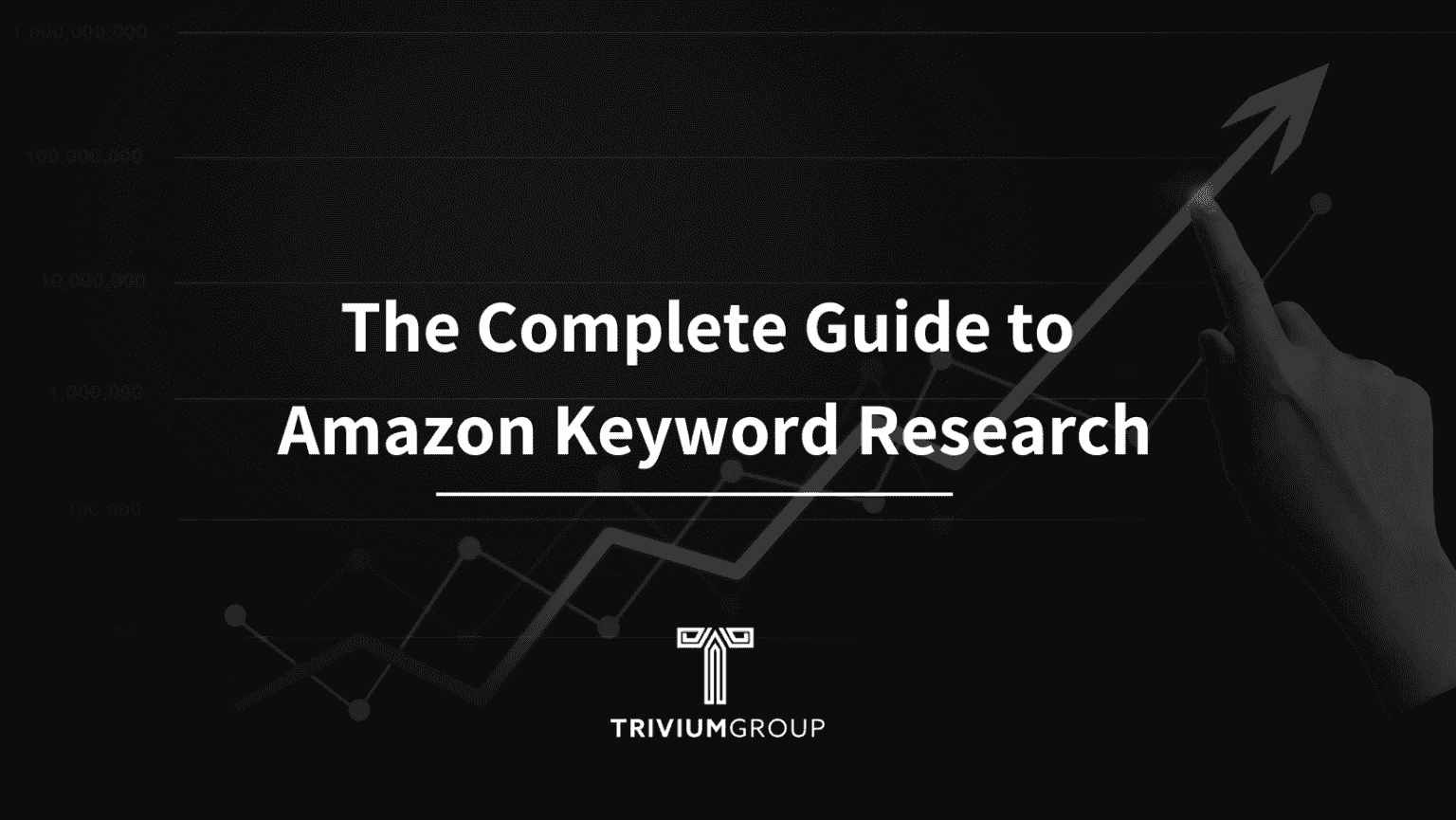Struggling to stand out in the vast Amazon marketplace? Mastering keyword research is key. As an e-commerce seller, you may recognize its importance but feel lost on where to start or how it can truly impact your PPC success.
Our comprehensive guide demystifies Amazon keyword research, offering actionable strategies that elevate your sales and PPC performance—your blueprint for digital marketing triumph awaits.
Why is Amazon Keyword Research Important?
Unlocking the potential of your Amazon listings begins with strategic keyword research. It’s not just about getting seen; it’s about connecting with customers, outshining competitors, and driving sales without breaking the bank on ads. Let’s dive into how smart keyword choices can elevate your business:
- Boost Product Visibility: Imagine a customer searching for that perfect item you offer. With well-researched keywords peppered throughout your product titles and descriptions, you’re guiding them straight to your doorstep. This isn’t just SEO—it’s making sure shoppers find exactly what they need: your products.
- Cultivate Organic Traffic: When customers land on your page naturally, that’s organic traffic in action—no ad spend required. By targeting search terms they use most often, you climb up the rankings and become their go-to choice, all while keeping advertising costs at bay.
- Gauge Customer Needs: Keywords are like a window into buyers’ minds—they reveal desires and dilemmas alike. Tap into this goldmine to align what you sell with what they seek, crafting spot-on marketing messages that resonate deeply and drive conversions.
- Maintain Your Competitive Edge: The marketplace teems with options; standing out is key. Through meticulous keyword optimization, claim your niche or lead the pack—even amidst fierce competition—and watch as customers consistently pick you over others.
- Fine-Tune Advertising Campaigns: Every dollar counts in advertising. Sponsored Brands, among other tools offered by Amazon, thrive when fueled by top-performing keywords identified through diligent research—maximizing ROI has never been smoother.
- Analyze Performance for Growth: The market evolves; so should your strategy. Keep tabs on trending searches to ensure relevance and refine tactics using performance data from cutting-edge tools—a proactive approach to staying ahead of the curve.
In essence, mastering Amazon keyword research is less about guesswork and more about precision—a targeted effort that connects products to people seamlessly while fostering growth every step of the way.
Unveiling the Secrets of Amazon Keyword Mastery: PPC vs. SEO
Dive into the art of keyword discovery on Amazon, where each term is a stepping stone to success. Whether you’re navigating the immediate impact of PPC or building an enduring presence with SEO, understanding their unique paths is crucial.
Goals:
- PPC: In the realm of Pay-Per-Click, we chase high-performance keywords that promise visibility and conversions—think instant sales boosts and strategic ranking leaps through savvy ad placements.
- SEO: For Search Engine Optimization, it’s about crafting organic listings that climb search ranks naturally, drawing in traffic and sales over time for sustainable brand growth.
The Focus Is Key
- PPC: Here we target conversion-rich keywords with solid ROI potential; this includes both popular terms and niche long-tails—even competitor brands—to cast a wide net for maximum effect.
- SEO: Our lens zooms in on relevant keywords ripe with search volume yet low in competition—a delicate balance aimed at optimizing every product detail from titles to backend tags for organic excellence.
Action Plan:
- In PPC,: Keywords become our arsenal for tailored ad groups and smart bidding tactics. We stay agile, refining our approach based on real-time data to keep ads performing at their peak.
- In SEO,: These same words weave seamlessly into product narratives—from compelling titles to engaging descriptions—always fine-tuning based on performance metrics to maintain top rankings organically.
The Cost of Competition Matters
In PPC competitive keywords mean higher costs per click; thus we seek a harmony between sought-after terms and those hidden gems that cost less but still deliver results. In contrast, while fierce competition can make SEO rankings more challenging to achieve there are no direct costs tied to keyword rivalry here—it’s all about strategy without the price tag.
In essence, whether your aim is quick wins via paid ads or cultivating lasting visibility through organic reach understanding these nuances will sharpen your Amazon marketing edge. Remember as you embark on either path—the right keywords can illuminate your way forward driving not just traffic but meaningful engagement that translates into tangible business growth. Let’s harness them wisely!
Mastering Amazon Keyword Research: Your Path to Visibility and Sales

Unlock the potential of your product listings with strategic Amazon keyword research—a cornerstone for success in a marketplace as vast as Amazon. Let’s dive into the most effective tactics that can elevate your visibility and drive sales.
- Tap into Auto-Suggestions: Begin with what’s at your fingertips—the search bar. As you type, observe how it anticipates customer queries, offering a goldmine of popular terms directly from shoppers’ minds.
- Analyze Competitors: Next, scrutinize top sellers in your niche. Their titles and bullet points are treasure troves of proven keywords; emulate their strategy while carving out your unique edge.
- Leverage Tools: Equip yourself with cutting-edge tools like Helium 10 or Jungle Scout. They’re not just about numbers; they reveal trends and untapped opportunities within reach.
- Mine Customer Reviews: Here lies raw insight—words straight from buyers’ hearts. Sift through reviews to weave those genuine phrases into your listing narrative.
- Pursue Long-Tail Keywords: Don’t overlook these gems! Specificity is key here; long-tail keywords may attract fewer eyes but promise higher conversion rates due to their targeted nature.
Incorporating these methods creates a symphony of relevance for both algorithms and customers alike. Keep an ear to the ground for shifting trends, refine continuously, and watch as organic traffic flows seamlessly towards your products on Amazon’s bustling stage.
How to Research Keywords for Amazon PPC Campaigns
Embarking on an Amazon PPC campaign is akin to setting sail in the vast ocean of e-commerce. Your compass? A well-researched set of keywords that guide potential customers straight to your products. Let’s dive into a streamlined approach for uncovering these golden phrases:
- Begin at home base: Your product listing holds a treasure trove of initial keyword ideas. Scrutinize your title, bullet points, and descriptions—these elements should be rich with terms that not only define your product but also resonate with shoppers.
- Leverage Amazon auto-suggest: The search bar isn’t just for buyers; it’s a window into trending searches. Observe the suggestions as you type in primary keywords; these are clues pointing towards what consumers seek.
- Spy on competitors: Peek at top listings within your niche. What words do they use? Identify both shared and unique terms—they’re invaluable for positioning your ads amidst fierce competition.
- Harness specialized tools: Digital aids like Helium 10 or Jungle Scout offer insights beyond basic intuition, revealing data-driven gems such as search volume and competitive analysis—crucial for fine-tuning your keyword arsenal.
- Categorize strategically: Sort keywords by relevance—from brand-specific to problem-solving descriptors—to craft ad groups that hit the mark with precision and purpose.
- Maintain momentum: Post-launch, keep a vigilant eye on performance metrics through Amazon Advertising reports. Adaptability is key; prune lackluster keywords while nurturing those driving results.
In essence, successful Amazon PPC campaigns hinge upon continuous research and refinement—a dynamic dance between seller savvy and consumer trends. Embrace this rhythm, and watch as visibility soars alongside sales!
How Amazon Search Differs from Google Search
Navigating the digital landscape requires a keen understanding of how search engines like Amazon and Google tailor their services to user needs. While both are titans in their realms, they diverge sharply in purpose and mechanics—a distinction that savvy marketers must grasp.
- Purpose: At its core, Google casts a wide net, aiming to connect users with information across websites, news platforms, and multimedia. Contrast this with Amazon’s laser focus on guiding consumers through a sea of products towards a purchase—each platform’s results reflect these distinct missions.
- Ranking factors: The intricacies of ranking well on each platform could fill volumes; however, it boils down to this: Google weighs site credibility and content richness heavily while Amazon zeroes in on product relevance and sales performance. Mastering these nuances can make or break your online visibility.
- Search intent: Understanding user motivation is key—Google caters to informational quests as much as shopping sprees. Meanwhile, Amazon shoppers arrive with wallets at the ready, making transactional keywords your golden ticket here.
- Advertising: Advertising prowess varies too; Google Ads span an extensive network beyond search results alone. In contrast, Amazon Advertising hones in on buyers amidst their decision-making process within its own ecosystem—an advertiser’s dream for conversion rates.
- Indexing: Lastly, indexing strategies differ vastly; where Google scours the web at large for diverse content types, Amazon meticulously catalogs product details. This calls for tailored SEO tactics—product-centric for Amazon versus broader approaches for Google optimization.
In essence, thriving across both platforms means adapting strategies to align with each one’s unique algorithmic heartbeat—from keyword research to SEO practices—and leveraging their differences to your advantage.<p
High Volume Keywords vs. Long Tail Keywords in Amazon PPC
In the dynamic world of Amazon PPC, striking the right balance between high-volume keywords and long-tail keywords is akin to conducting an orchestra—each plays a pivotal role in harmonizing your advertising strategy. Whether you’re aiming for widespread visibility or niche market penetration, understanding these keyword types will fine-tune your campaign’s performance.
High-Volume Keywords:
Advantages:
- A surge of traffic awaits with high-volume keywords, casting a wide net that can captivate countless shoppers and amplify clicks leading to potential sales spikes.
- Their broad appeal expands your reach, elevating product exposure and engraving brand recognition across vast consumer landscapes.
Considerations:
- An arena of fierce competition emerges here; many sellers vie for these popular terms, potentially inflating bid costs while jostling for prime ad real estate.
- Beware the allure of quantity over quality—generic terms may attract lookers more than buyers, diluting conversion rates amidst a sea of casual browsers.
Long-Tail Keywords:
Advantages:
- Navigate through less contested waters with long-tail keywords where specificity reigns supreme, often yielding cost-effective bids and coveted ad positions.
- Precision targeting means attracting consumers whose search intent aligns closely with your offering—expect higher conversion rates as a reward for relevance.
Considerations
- Traffic trickles rather than flows with long-tail phrases due to their specialized nature; yet diversifying your keyword portfolio can bridge this gap effectively.
- Meticulous research paves the way to uncovering golden long-tail opportunities—a task demanding ongoing attention but promising rich rewards for those who master it.
Your journey through Amazon PPC need not be solo. Embrace both high-volume symphonies and long-tail sonatas within your campaigns. By doing so, you’ll orchestrate an advertising masterpiece that resonates with audiences far and wide—and converts them into loyal patrons of your brand.
Final Thoughts
Dive into the world of Amazon PPC with a strategic blend of keyword types at your fingertips. Imagine casting a wide net with high-volume keywords to capture attention and build brand presence—this is your visibility powerhouse. Now, pair that with the precision of long-tail keywords, designed to hook in those ready-to-buy customers, enhancing conversion rates while keeping costs in check.
- Visibility meets efficiency: High-volume keywords expand reach; long-tail counterparts drive conversions.
- Cost-effective campaigns: Targeted long-tail phrases often mean less competition and lower ad spend.
- Brand building: Broad terms help establish market presence and customer awareness.
The art lies in striking the perfect harmony between these two approaches. Test, measure, refine—let this be your mantra as you fine-tune your campaigns for peak performance. With each adjustment comes greater insight into what resonates with shoppers on their path to purchase. Your goal? A symphony of clicks, impressions, and sales—all playing together in perfect concert.
In essence, let’s not just play the game; let’s master it by leveraging both keyword strategies to elevate our Amazon PPC success story!
Amazon Keyword Research FAQs
Amazon sellers can track the performance of their keywords by using tools such as Amazon Advertising Tools. This gives information about how their keywords are performing, what keywords are getting more clicks, and more.
Amazon sellers can use the Amazon search bar to search for keywords and related phrases that are relevant to their products. This helps them discover which words are successful and what customers are looking for when they search Amazon.
You can research keywords for free on the Amazon website by looking for the automated search suggestions that pop up when you search for an item, or you can use a free AI keyword research tool that can find keywords for you to use.
While you are allowed to have 1000 keywords in your listing, the usual recommended amount is much lower: only about 50. Try keeping it between 35-60. A listing that is stuffed with keywords might do well on the search results page but probably won’t look appealing to customers.
Amazon sellers should optimize their keyword strategies by thoroughly researching words and phrases that are related to their products and have high search volume. They should also create a list of target keywords that can be used for their Amazon product listing.
Sellers can identify and target long-tail keywords by researching and analyzing customer reviews, competitor listings, and related words and phrases. They should also use keyword research tools such as Amazon Keyword Research Tools and other similar tools.
Amazon sellers should update their keyword research on a regular basis, since trends and customers’ preferences change over time. As a result, sellers should continuously be monitoring and optimizing their keyword strategies.
Keyword Research leads to SEO, but is not in itself SEO. Keyword research lets you understand which keywords your target audience are likely to be searching for. Once this is known, including volume, how competitive the search terms are etc, you can then decide for which keywords to “SEO” for.
Golden keywords are normal keywords that are underrated and underserved. This means that there are things that people search for, but these particular phrases are used as keywords less compared to other phrases – which is what makes it ‘golden.’ To identify golden keywords, you should find keywords with a low monthly search volume and have only a few listings.
Rich keywords have a high volume that will add a high value to your listing and help it rank on top. Do not confuse rich keywords with keyword-rich content because the latter just means any type of content with many keywords.
The four types of keywords are long-tailed, short-tailed, questions, and intent-targeting. They’re pretty easy to understand: short-tailed keywords only consist of a couple of words, usually between 1 to 3. An example would be ‘bed sheets.’
Keyword research is the process of discovering words and phrases that customers type into search engines – like Amazon – when they are looking for products like yours.
Analyzing competitors’ listings can be helpful for Amazon sellers as it gives insightful information about the keywords and phrases that are successful for other brands. It also helps to ensure that their products do not have the same keywords.
Match types are important to Amazon sellers because they help determine which keywords are being used in searches and how Amazon’s algorithms will rank listings in search results. Sellers should use different match types to target different kinds of customers.
Amazon sellers can use various methods to do keyword research such as manually researching popular keywords, using Amazon’s search bar, analyzing competitors, and using keyword research tools.
You can research Amazon keywords in multiple places, including the Amazon website. You can use the suggested keywords that show when you search for an item on Amazon or one of the many keyword tools available on the internet. These tools are easier to use than manually finding keywords, but the results may need to be refined a bit before you can use the keywords.
Keyword research is important for Amazon sellers because having the right keywords in your listing enables users to find your products easily. This helps you to attract more customers and increase sales.

Mina Elias, “The Egyptian Prescription,” is the CEO of Trivium Group. A chemical engineer turned Amazon seller, he mastered Amazon PPC advertising, investing personally. His insights, shared via YouTube and podcasts, led to Trivium’s global recognition. Today, Mina is a leading figure in the Amazon PPC space.



